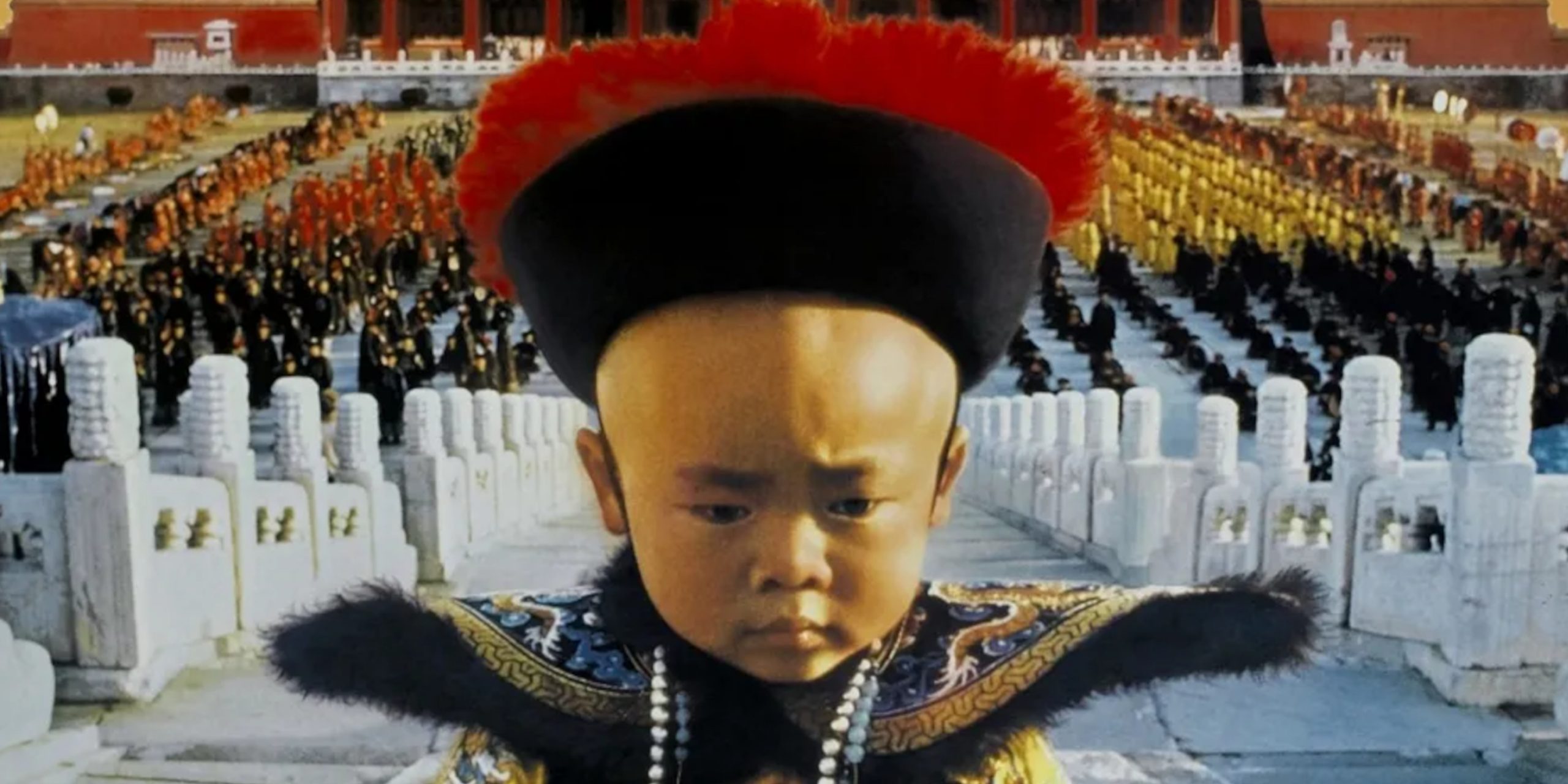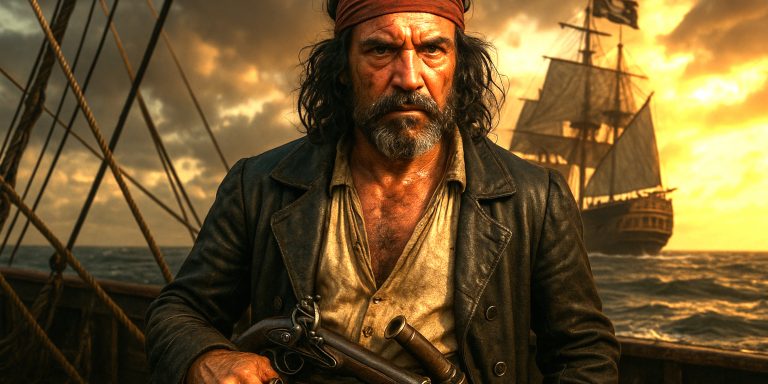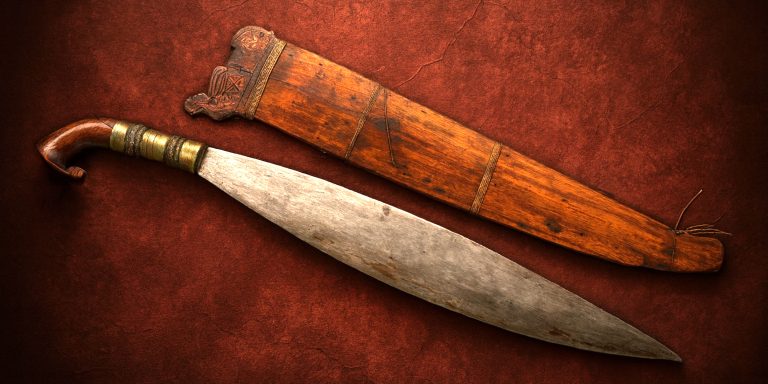
When Bernardo Bertolucci released The Last Emperor in 1987, it was clearly something unexpected. It was in some ways a sweeping visual meditation on the end of imperial China, the fragility of identity, and the absurdity of power when it slips out of one’s grasp. The story of Pu Yi, the final emperor of the Qing dynasty, unfolds like a tragedy written by history itself, set against the collapse of a world that had ruled for over two millennia.
The film manages something few historical dramas achieve: it captures both the grandeur and the futility of empire without turning its protagonist into a caricature. It’s a work that lingers, lush, melancholic, and quietly damning.
A Portrait of a Lost World
Pu Yi ascends the throne as a toddler, barely able to grasp the weight of his crown, and that image alone tells us everything about the decline of the Qing dynasty. The Forbidden City becomes a gilded prison, filled with ritual, servants, and silence.
Bertolucci’s meticulous attention to detail recreates this fading world with unnerving authenticity. The corridors gleam with imperial opulence, yet they echo with emptiness. Every scene feels like a moment frozen before collapse. The director was granted rare permission to film inside the real Forbidden City, a decision that lends the film its haunting sense of legitimacy.
As a historian, I’ve seen plenty of films that dress up the past in brocade and drama, but few that dare to show it dying so beautifully. The Qing court is both majestic and irrelevant, a relic refusing to admit its own obsolescence.
History and Transformation
Pu Yi’s story runs parallel to the transformation of China itself. From emperor to puppet ruler of Manchukuo under Japanese control, to prisoner under the new Communist regime, his life mirrors the nation’s turbulent shift from empire to modern state.
The film captures this transformation without needing to spell it out. The camera shifts from the golds and reds of imperial splendour to the cold greys of the twentieth century. Pu Yi’s own evolution, or slow erosion, is set against the political upheaval of his homeland.
There’s a certain tragic humour in watching him struggle to understand his place in a modern world that has no use for emperors. The scene where he tries to tend his own garden as an ordinary citizen, stripped of status but not of self-importance, feels almost like a historical in-joke.
Performances and Direction
John Lone delivers an extraordinary portrayal of Pu Yi, balancing fragility, arrogance, and genuine confusion. It’s easy to pity him, but just as easy to be frustrated by his inability to grasp the world changing around him.
Peter O’Toole, as Reginald Johnston, the Scottish tutor tasked with educating the young emperor, provides the film’s moral compass. Their relationship is oddly touching: a collision between imperial tradition and Western rationalism, both doomed to fail in their own ways.
Bertolucci’s direction is patient and painterly. Every frame feels deliberate, almost ceremonial. It’s no surprise the film swept the 1988 Academy Awards, winning nine Oscars, including Best Picture. Yet what makes it endure isn’t its grandeur but its quietness, the sense that history itself is watching, dispassionately.
Historical Accuracy and Artistic Licence
While the film largely follows the broad strokes of Pu Yi’s autobiography, From Emperor to Citizen, it takes liberties in tone and emphasis. Some historians argue that it softens his collaboration with Japan or simplifies his later re-education under communism.
That said, history isn’t served best by pedantry. The film’s emotional truth is what matters: the isolation of privilege, the disintegration of an empire, and the uneasy birth of modern identity.
If anything, it’s the rare instance where cinema’s romanticism adds to history rather than obscuring it. Watching The Last Emperor isn’t about learning exact facts, it’s about feeling the dissonance between power and powerlessness.
Cinematography and Music
Vittorio Storaro’s cinematography is a masterclass in visual storytelling. The shift in palette, from the warm hues of imperial China to the stark tones of Pu Yi’s imprisonment, perfectly mirrors his inner decline.
Meanwhile, the score by Ryuichi Sakamoto, David Byrne, and Cong Su blends Western orchestration with traditional Chinese elements, giving the film its aching, almost timeless rhythm. It feels less like background music and more like the echo of a civilisation’s fading heartbeat.
Legacy and Reflection
The Last Emperor remains one of the most visually ambitious historical films ever made, but its real strength lies in its humanity. It doesn’t glorify the past; it mourns it.
As a historian, I find it fascinating that the film never fully decides whether Pu Yi deserves sympathy or scorn. He’s neither villain nor hero, just a man trapped by the machinery of history. There’s something brutally honest in that, history rarely offers tidy moral conclusions.
Perhaps that’s why The Last Emperor still feels relevant. It’s about how societies deal with change, how individuals cling to identity when the world decides they’re obsolete, and how history always moves on, regardless of who’s left behind.
The Seven Swords Takeaway
The Last Emperor isn’t simply a film about China, it’s a meditation on impermanence. Every empire, no matter how radiant, ends up in the museum of human ambition.
Pu Yi’s life, framed through Bertolucci’s lens, is a reminder that power is temporary, history is indifferent, and dignity often survives only in memory.
And perhaps that’s the greatest irony of all: a film about loss became one of cinema’s grandest triumphs.
Watch the trailer:



